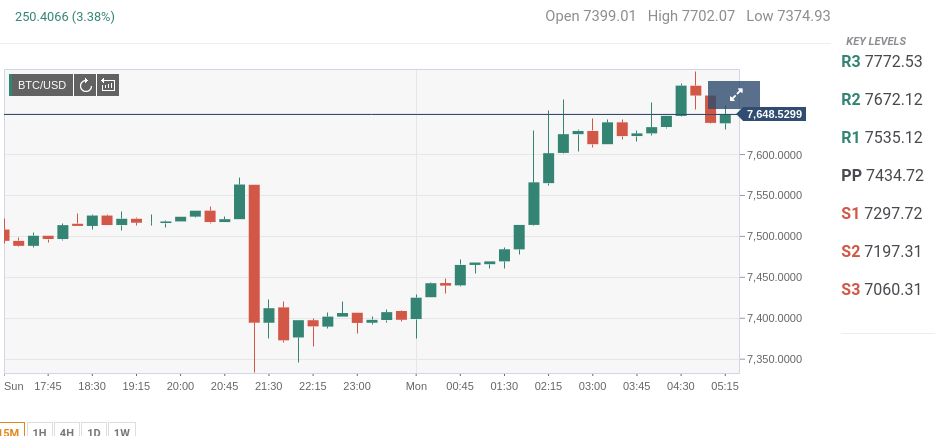What is An Initial Coin Offering? Raising Millions In Seconds

The Initial Coin Offering gold rush –
the future of fundraising or just another crypto scam?
If you are searching for the biggest trend in cryptocurrency today, a look at Initial Coin Offering (ICO) might be a good start. The idea to presale coins of a cryptocurrency or token of a blockchain project has evolved in a crazy successful instrument to raise funds for the development of a new application. Our guide gives an overview on Initial Coin Offering- ICO and presents the hottest past, current, and future ICOs.
What is An Initial Coin Offering?
ICO is the abbreviation of Initial Coin Offering. It means that someone offers investors some units of a new cryptocurrency or crypto-token in exchange against cryptocurrencies like Bitcoin or Ethereum. Since 2013 ICOs are often used to fund the development of new cryptocurrencies. The pre-created token can be easily sold and traded on all cryptocurrency exchanges if there is demand for them.
With the success of Ethereum ICO are more and more used to fund the development of a crypto project by releasing token which is somehow integrated into the project. With this turn, ICO has become a tool that could revolutionize not just currency but the whole financial system. ICO token could become the securities and shares of tomorrow.
Short History of Initial Coin Offering? – ICO
Maybe the first cryptocurrency distributed by an ICO was Ripple. In early 2013 Ripple Labs started to develop the Ripple called payment system and created around 100 billion XRP token. The company sold these token to fund the development of the Ripple platform. Later in 2013, Mastercoin promised to create a layer on top of Bitcoin to execute smart contracts and tokenize Bitcoin transactions. The developer sold some million Mastercoin token against Bitcoin and received around $1mio.
Several other cryptocurrencies have been funded with ICO, for example, Lisk, which sold its coins for around $5mio in early 2016. Most prominent however is Ethereum. In mid-2014 the Ethereum Foundation sold ETH against 0.0005 Bitcoin each. With this, they receive nearly $20mio, which has become one of the largest crowdfunding ever and serves as the capital base for the development of Ethereum. As Ethereum itself unleashed the power of smart contracts, it opened the door for a new generation of Initial Coin Offering.
Ethereum – The Initial Coin Offering?- ICO Crowdfunding Machine
One of the easiest application of Ethereum’s smart contract system is to create a simple token which can be transacted on the Ethereum blockchain instead of Ether. This kind of contract was standardized with ERC#20. It made Ethereum host of such a wide scope of ICO that you can safely say that Ethereum found its Killer App as a distributed platform for crowdfunding and fundraising.
The most prominent demonstration of the potential of Ethereum’s smart contracts has been The DAO. The distributed investment company was fuelled with Ether worth $100m. The investors received in exchange against Ether Dao Token which had their own market price and enabled the holder to participate in the governance of the DAO. After it was hacked, the DAO however failed.
The concept of funding projects with a token on Ethereum became the blueprint for a new and highly successful generation of crowdfunding projects. If you already tried out, you know that investing in token on top of Ethereum is charmingly easy: You transfer ETH, paste the contract in your wallet – and, tata: The token appear in your account and you are free to transfer them as you want.
Examples for successful Initial coin offering on Ethereum are:
- Augur
- Melonport
- Golem
- ICONOMI
- Singular DTV
- First Blood
- Digix DAO.
There are dozens of ICO every month which explore new and creative ways to connect the application with the token and to leverage smart contracts to add more features to these tokens.
The potential of this trend is immense. ICO enables every individual and every company to easily release freely tradable tokens to raise funds. It could be used to completely reconstruct the financial system of shares, securities and so on. It decentralized not just money, but stock creation and trade. If you want to assess Ethereum’s market capitalization you should not only look at the market cap of Ether itself but also on the value of the token, which adds something like $300 Million to Ethereum’s $4 Billion market cap.
Legality
The legal state of ICO is mostly undefined. Ideally, the token is sold not as a financial asset but as a digital good like many other things. This is why ICO is often called “crowd sale”. In this case, in the most jurisdiction, the funding with an ICO is not regulated, which makes it extremely easy and paperless, given a lawyer experienced with the issue is on board.
However, some jurisdictions seem to be aware of ICO and tend to regulate them similar to the sale of shares and securities. The spectacular implosion of the DAO did a good job in kindle regulators attention. So while ICO currently mostly happen in a gray area, in the future they most likely will be regulated. This could bear some financial and legal risks for investors. Also, the cost and effort to comply with regulation could reduce the advantages of ICO compared with traditional means of funding.
Profit and Loss
Many ICO has been a lucky choice for investors. ETH, for example, was sold at 0.0005 Bitcoin and is worth today 0,05 BTC. Profit: 10,000 percent. Augur token (REP) were sold for around 0,005 each and are now traded at 0,01. The gain in value of 100 to 500 percent in Bitcoin is common for successful ICO.
On the other side, many ICO ends with losses. Cryptocurrencies like Lisk, IOTA-token or Omni did not hold the value in Bitcoin the token has been assessed at the ICO (or struggle to keep it). Often ICO is even used by scammers and semi-scammers: Build a glossy website, write some blocks of bullshit bingo, promise the greatest project/cryptocurrency ever, and be happy if you receive just 50 or 100 Bitcoin. Besides the large and successful ICO, like Lisk, Melonpost, Augur or Iconomi, many small and shady ICO did collect funds and
delivered nothing at all.
The ICO market is currently still completely unregulated. Everybody should be aware, that this does imply not only large profits for investors, but also large losses.
The hottest Initial Coin Offering of Yesterday, Today and Tomorrow
Let’s have a look what’s going on of the market for ICO. In the past years, there have been a couple of wildly successful ICO.
Hot past Cryptocurrency ICO
Ripple
Ripple Labs created 100 billion XRP-token which serve as an anti-spam mechanism in the payment network Ripple, as you have to pay your network fees in XRP. The XRP are sold by Ripple Labs; their value doesn’t move in a clear direction, while the trend is more downwards. It started with around 5,000 Satoshi, sometimes felt below 1,000 Satoshi, raised above 7,000 and finally fell again to a new low of 600 Satoshi, before again raising on 3,000.
Next
Next was a new gen cryptocurrency made in 2013. For a start, the 1 billion token was sold to early investors. With the ICO the developers only got a double digits amount of Bitcoins. Today the NXT token, however, are worth much more and Next has become a relatively successful and stable cryptocurrency.
Mastercoin
In 2013 Mastercoin announced to build a layer on top of Bitcoin and sold the Mastercoin-token to investors. The developers received around 10,000 Bitcoin, which has been worth $1mio at this time. Mastercoin token gained value some month later; some investors made huge profits. Later Mastercoin merged with Counterparty and Omni.
Ethereum
The largest ICO by now was made by Ethereum. With a presale of around 60mio ETH, the Ethereum Foundation raised around 31,500 Bitcoin. This event has become one of the biggest crowdfunding ever and the start of a wildly successful cryptocurrency. The investors of the ETH-presale profited massively.
Lisk
Based on BitShares, Lisk is a JavaScript written Blockchain which enables smart contracts on sidechains. Lisk sold the coins for Bitcoins and received around $5mio.
Hot past Ethereum token ICO
While most ICO in the past has been restricted to building a new cryptocurrency, the smart contracts of Ethereum enable startups also to use ICOs to fund development. Most of them are working with Ethereum itself and trick their presold token somehow in the process. Some examples:
Augur
The decentralized prediction market uses so-called REP-token to decide on the outcome of events. 80 percent of these tokens have been sold to fund the development and got the team more than $5m. Today all the token are worth more than $100m.
Golem
The Golem project aims to create a decentralized supercomputer, to which participants can contribute with their own computer and earn money by selling its power. Golem uses the Ethereum blockchain for smart contracts; the GNT token is needed to pay for the services. The ICO was restricted on 820,000,000 tokens, for which the developers received more than 10,000 BTC. Today the market share of Golem is beyond 50,000 BTC.
ICONOMI
Iconomi is a platform for the management of virtual assets. The ICN token is something like shares on the platform and should receive parts of the profits. The developers sold 85,000,000 token and got more than 17,000 BTC for it. Today it has a market capitalization of nearly 40,000 BTC.
First Blood
The Asian platform for decentralized Sportsbet finished the ICO of its token in some seconds. Most of them have been bought by a Chinese exchange.
SingularDTV
SingularDTV wants to merge Ethereum, smart contracts and the production and stream of videos. With the ICO the platform raised more than 12,000 BTC. Today the whole tokens are worth around 40,000 BTC. SingularDTV wants to merge Ethereum, smart contracts and the production and stream of videos. With the ICO the platform raised more than 12,000 BTC. Today the whole tokens are worth around 40,000 BTC. The token of above ICO can be bought and traded on exchanges. Some additional ICO has just finish some time ago and prepare to release the newly created token on the Ethereum Blockchain. This are the following projects:
Melonport
Like Iconomi Melonport aims to develop a platform for the management of blockchain assets built upon Ethereum. The MLN token the developers sold will be needed to use the platform and have been sold or more than 2,000 BTC few month ago.
Qtum
This project wants to build a platform for the easy creation and use of blockchain based smart contracts. For this mission, it could raise more than 14,000 Bitcoin in an ICO.
Chrono Bank
The “uber of recruitment” intends to build a platform with its own currency for freelance projects. They sold 710,000 tokens for more than 4,000 Bitcoin.
Dfinity
Similar to Golem, Dfinity wants to build a decentralized platform for cloud computing. In its ICO it raised more than 3,000 Bitcoin.
BlockPay
With “only” about 1,000
With “only” about 1,000 Bitcoin the ICO of BlockPay was one of the smaller ICOs. BlockPay is a startup building a payment processor for several cryptocurrencies. With “only” about 1,000 Bitcoin the ICO of BlockPay was one of the smaller ICOs. BlockPay is a startup building a payment processor for several cryptocurrencies. This is are just examples. There are hundreds of further more or less successful ICO.
Hot Initial Coin Offerings Today
Currently, you can invest in ICOs like:
- Humaniq (a wallet for the unbanked), aeternity (“scalable smart contracts interfacing with real world data”), Internet of Coins (a distributed environment for several blockchains) and Cosmos (similar: “a network of distributed ledgers”).
Most interesting however is Blockchain Capital.
- Traditional investment company which funds a lot of companies in the cryptocurrency ecosystem like BitGo, BitFury, Blockstream, BTCC, Coinbase, Ethcore, Kraken, and Ripple. With the ICO Blockchain Capital enables everybody to participate in its investment rounds.
Not every ICO is worth your money. Some just throw a couple of keywords in the air, something with blockchains, distributed platforms, smart contracts and so on, without having a real business plan or just the skills to realize the project. But some are really interesting. Good ICOs have presented months ahead, and the investment community looks forward to participating in it.
Hot future ICOs
Since some months the Ethereum community waits for the start of the Gnosis ICO. Like Augur Gnosis will become a decentralized prediction market on Ethereum. Since it is developed by a respected Ethereum developer stakes are high. Also, the launch of EtherEx, a decentralized cryptocurrency exchange, is eagerly awaited. While not as prominent as Gnosis, EtherEx promises to become a part of a truly decentralized ecosystem on Ethereum. Same goes for Akasha, a decentralized social network governed by the Ethereum blockchain. ICO is expected, but no date is announced by now.
With Rootstock and Hivemind, two sidechain ICO are anticipated. However, it is not known if the developers of Rootstock and Hivemind plan to presale tokens. They did not announce it, but the structure of their projects implicates tokens, and somehow these tokens have to be distributed. Several appcoins like Filecoin, which enable the storage of files in the IPFS, and Skycoin, a “third generation cryptocurrency”, should be on the list of any ICO hunter. They did not announce an ICO, but will likely presale the coins.
Article Produced By
BlockGeeks
https://blockgeeks.com/guides/initial-coin-offering/
David https://markethive.com/david-ogden













